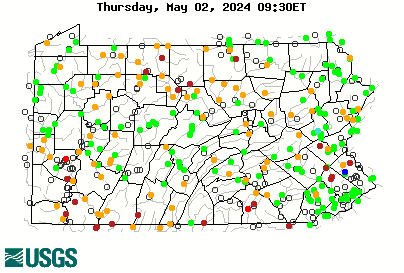It was deemed impractical when it was examined more closely. The areas where BT were heaviest would be hard access and transport the fish for relocation. The number of small tributaries where BT could hide were a big problem too. There was a suggestion to give them to the raccoons ("bank release") instead. That was undesirable to deliberately kill wild fish- which would be against regulations and need special PFBC approval. It would also require multiple years of removal which would extend beyond the short period of time the reservoir was drained and once the reservoir was filled it would return as a "sanctuary" for BT. PFBC wasn't too enthusiastic either. My opinion. It was a good idea to consider it, but like many projects discussed at meetings or on the internet (
😉 ), once you look into it seriously it became a less viable project. The decision to consider it was based on a small window of when the reservoir was drained versus particular features of the stream to suggest it would be sucessful or practical.
For those new to this. They drained the Bells Gap reservoir, which served as a refuge for BT that migrated up into BGR. There were discussions if this was an opportunity to remove BT and relocate them downstream of the dam. Anyway, the good news about the dam replacement is that it now has the capacity for bottom release, which will improve fishing below the dam (before the top release made the temps too high in the summer and BGR was mostly a put and take fishery below the dam). A number of organizations just completed a trout habitat project at the community park (see
https://www.littlejuniata.net/).
As a matter of fact, they are continuing riparian buffer planting at the site this Saturday July 19th at 10AM and the community park. Help if you can.




